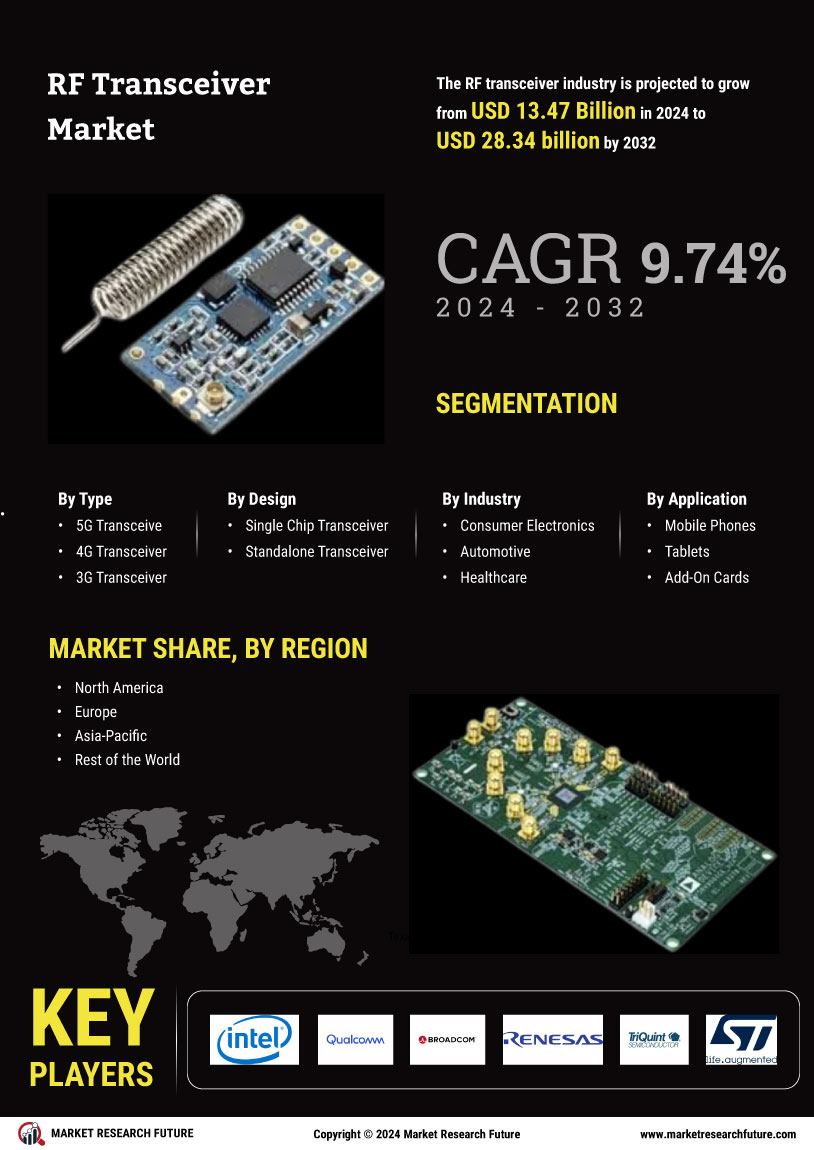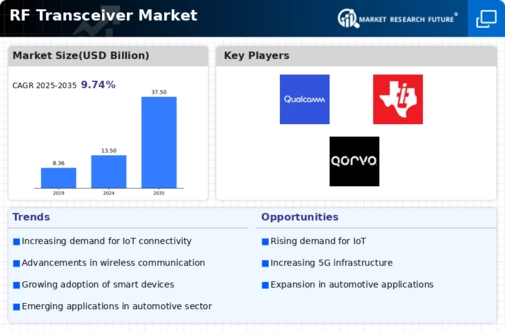Major market players are investing heavily in research and development to expand their product lines, which will help the RF transceiver market grow even more. Market participants are also undertaking various strategic activities to expand their global footprint, with important market developments including new product launches, contractual agreements, mergers and acquisitions, higher investments, and collaboration with other organizations. To expand and survive in a more competitive and rising market climate, the RF Transceiver industry must offer cost-effective items.
Manufacturing locally to minimize operational costs is one of the key business tactics manufacturers use in the global RF transceiver industry to benefit clients and increase the market sector. In recent years, the RF transceiver industry has offered some of the most significant advantages to medicine. Major players in the RF transceiver market, including Intel Corporation, RF Micro Devices Inc, SAMSUNG, Qualcomm Technologies, Inc. and its affiliated companies, Broadcom, Renesas Electronics Corporation., and others, are attempting to increase market demand by investing in research and development operations.
Qualcomm Inc designs and manufactures digital wireless telecommunication products and services. The company offers integrated circuits and system software for wireless mobile devices. Its offerings include radio frequency transceivers, consumer wireless products, modems, processors, power management, and integrated wireless connectivity chipsets. The company's products find applications in mobile phones, laptops, handheld wireless computers, data modules, gaming devices, infrastructure equipment, routers, access points, gateway equipment, desktop computers, and IoT devices. In April 2020, Qualcomm Incorporated introduced a 212 LTE IoT modem integrated with an NB2 IoT chipset.
It is a single-chip solution consisting of a modem baseband, application processor, memory, RF transceiver with a fully integrated RF front end, and power management unit.
Huawei Technologies Co Ltd (Huawei), a subsidiary of Huawei Investment & Holding Co Ltd, provides information and communication technology (ICT) infrastructure and smart devices. The company's product portfolio includes laptops, tablets, routers, wearables, headphones, enterprise wireless products, enterprise optical transmission and access products, networking products, and cloud and computing products. It also offers services, software for carrier networks, and smart services for enterprises. Huawei serves education, finance, healthcare, internet services providers, manufacturing, oil and gas, public safety, retail, smart city, smart grid, and transportation industry. In February 2020, Huawei Technologies Co. Ltd. introduced the 800 G tunable ultra-high-speed optical module.
The module is consistent with line speeds that can be tuned from 200 Gigabits per second (Gbps) to 800 Gbps and can transfer bandwidths of as much as 48 terabits per second (Tbps) on a single fiber.
















Leave a Comment